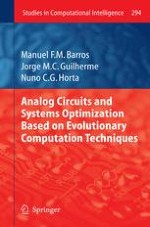The microelectronics market, with special emphasis to the production of complex mixed-signal systems-on-chip (SoC), is driven by three main dynamics, time-- market, productivity and managing complexity. Pushed by the progress in na- meter technology, the design teams are facing a curve of complexity that grows exponentially, thereby slowing down the productivity design rate. Analog design automation tools are not developing at the same pace of technology, once custom design, characterized by decisions taken at each step of the analog design flow, - lies most of the time on designer knowledge and expertise. Actually, the use of - sign management platforms, like the Cadences Virtuoso platform, with a set of - tegrated CAD tools and database facilities to deal with the design transformations from the system level to the physical implementation, can significantly speed-up the design process and enhance the productivity of analog/mixed-signal integrated circuit (IC) design teams. These design management platforms are a valuable help in analog IC design but they are still far behind the development stage of design automation tools already available for digital design. Therefore, the development of new CAD tools and design methodologies for analog and mixed-signal ICs is ess- tial to increase the designer’s productivity and reduce design productivitygap. The work presented in this book describes a new design automation approach to the problem of sizing analog ICs.
